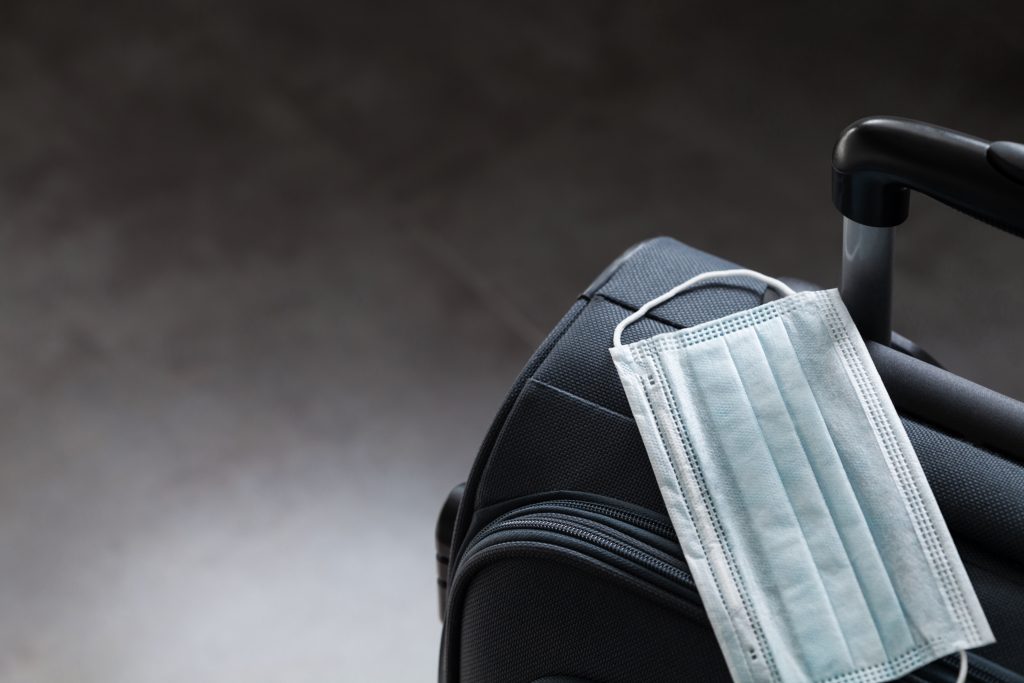During the first three quarters of this year, over 70% of active ARCreport users employed the SMS system to manage change, risk, and communications regarding COVID-19. When COVID-19 hit at the beginning of the year, the drop in flight activity for many departments was also reflected in ARC. While January was the most active month of the year for SMS submissions, there was a rapid decline of almost 75% in submissions from that peak to the low point in April.
However, as much of aviation came to a stop in April and lockdowns started to go into effect worldwide, aviation departments were quick to adjust. While flight related reports decreased, safety and risk assessment reports trended in the other direction from a low in January, to a 500% increase at their submission peak in July. Departments transitioned from standard operations to using their SMS and change management tools to evaluate and respond to health risks, redefine and communicate procedures, and manage risks created by constraints placed on their operations due to health regulations and new best practices.
General Procedure Development
During this time, many of the form submissions and communications within ARC centered around general procedure development. This included additions and changes to company policies, cleaning procedures, and aircraft / passenger procedures. Some changes became permanent, while others were temporary provisions due to the circumstances. Essentially all departments addressed standard CDC, aviation industry, WHO, and European agency recommendations regarding masks and social distancing. Many departments also implemented, and still maintain, temporary travel restrictions for personnel, prohibiting or curbing unnecessary domestic or international travel, and imposing bans on commercial air travel in general. Posts and submissions with links to internal and external resources and documents were, and still are, common as guidance continues to change.
Facility and hangar access were restricted during lockdown, after which most operators continued with reduced access limited to essential personnel or on rotating schedules. Another common submission was the establishment and communication of return to work policies. These addressed issues like returning to work after lockdown restrictions were lifted, after COVID-19 exposure, and after being sick with COVID-19 or another illness. Team members were able to use the ARCreport system to notify management of possible COVID-19 exposure and use the report to discuss and execute mitigations.
Protections for passengers and ground personnel were also put into place. In particular, new cleaning procedures were observed not only for the aircraft, but also office spaces and hangars. Methods to reduce passenger exposure to crews and shared spaces were also used, like closing doors to separate crew and passengers, reducing the number of passengers allowed on board, and working to increase separation between cabin crew and passengers, particularly during times when masks may not be on (such as during meals). Pre- and post-fight procedures were also modified to reduce crew time with ground crew, reduce passenger and crew contact during boarding, and to reduce or eliminate passenger and crew time in FBOs.
Management of COVID-19 Operations and Indirect Risks
There were a number of indirect effects that COVID-19 had on the aviation industry that created additional risks operators have had to mitigate – most notably delays in training and medical renewals. Due to travel restrictions, restrictions to in-person training, and lack of availability of medical personnel for routine procedures, there were a number of operators that reported lapses in recurrent training and maintenance of first-class medicals. Most have used risk assessment reports to determine mitigations such as careful documentation of which personnel are on extended grace periods, additional self-study, having maintenance work checked by personnel still within their currency periods required for their certificates, and a review of regulations to ensure minimum training requirements were still being met.
Additionally, with the reduction in most flight schedules, a lack of recency became a risk factor for many operators. This issue included recent total time, time in type, and type of operation, which increased flight risk assessment scores and led to deviation reports. Those departments with maintenance or ground crews also utilized deviation reports to mitigate risks when operations contrary to normal company policies were required, such as when working in situations that generally require at least two people, like working in restricted spaces and at elevated heights.
As the year went on, safety reports regarding extended duty days, due to unusual routing to avoid areas with high infection rates, began to appear. Along with this trend came the sharing and dissemination of updated procedures for specific geographical areas and policies for particular FBOs, car services, and hotel/accommodations. Teams shared local regulations, entry/exit requirements, and reports on the status of service vendors’ compliance with health protocols.
Making the Best of It
When flight schedules slowed and initial COVID-19 procedures were put into place, departments started focusing on operations manual reviews and updates in general. Company Directive and Procedure Change reports climbed from January, peaked in May, and then declined in June and July. Some departments had discovered issues and gaps in existing procedures as they were doing their reviews for implementation of COVID-19 procedures, while others simply used the downtime to address items long overdue for review. Operators used the down-time to improve their operations overall.
As we start closing out the second half of the year, we are seeing stabilization in many areas. Submissions are decreasing, with procedural reports starting to fall in August and returning to almost normal in October. As we move into the end of the year and early 2021, there are likely to be more changes due to weather shifts, the holiday season, and COVID-19 vaccinations. Regardless of what comes our way, it seems that aviation departments are ready to tackle any challenge quickly and effectively using SMS and change management strategies and tools to help them.



